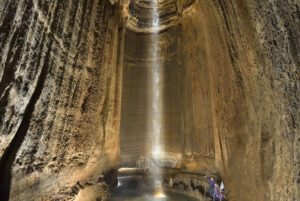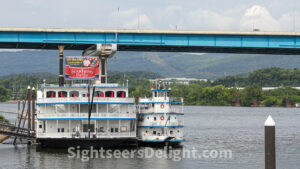In the 1920s, Leo Lambert thought Lookout Mountain Cave would make a great tourist attraction. Once used as a hideaway for outlaws, refuge for Native Americans and a hospital during the Civil War, a railroad tunnel built in the early 1900s intersected the cave’s entrance and sealed it from the public. But that didn’t deter Lambert from searching for the cave. In 1928, he led a team of engineers and started digging an elevator shaft to access the cave. Ninety-two days later, Lambert found the cave, but not before digging through more than 400 feet of solid limestone. But when Lambert realized there might be more than just a cave buried beneath Lookout Mountain, he took off down a tight corridor, and 17 hours later, he found what today known is as Ruby Falls.
37409
The Southern Belle Riverboat operates sightseeing trips along the Tennessee River. The Southern Belle offers a variety of daily cruise options on its 450-passenger vessel built in 1985.
37402
The Tennessee Valley Railroad Museum is the largest operating historic railroad in the Southeast. Designated the Official Railroad Museum of Tennessee, TVRM trains operate over rails that were first laid in 1856, and trains pass through the 979-foot-long Missionary Ridge Tunnel, an exceptional feat of engineering when it opened in the 19th century.
37421
The 2,376-foot-long Walnut Street Bridge, constructed between 1889 and 1891, was the first to connect Chattanooga, Tennessee’s downtown with North Chattanooga (or North Shore). According to the Historic American Engineering Record, “The bridge was apparently the first non-military highway bridge across the Tennessee River.” Streetcars formerly ran across the bridge, which was open to vehicle traffic until May 11, 1978. The bridge was the site of two lynchings, Alfred Blount on February 14, 1893, and Ed Johnson on March 19, 1906.




